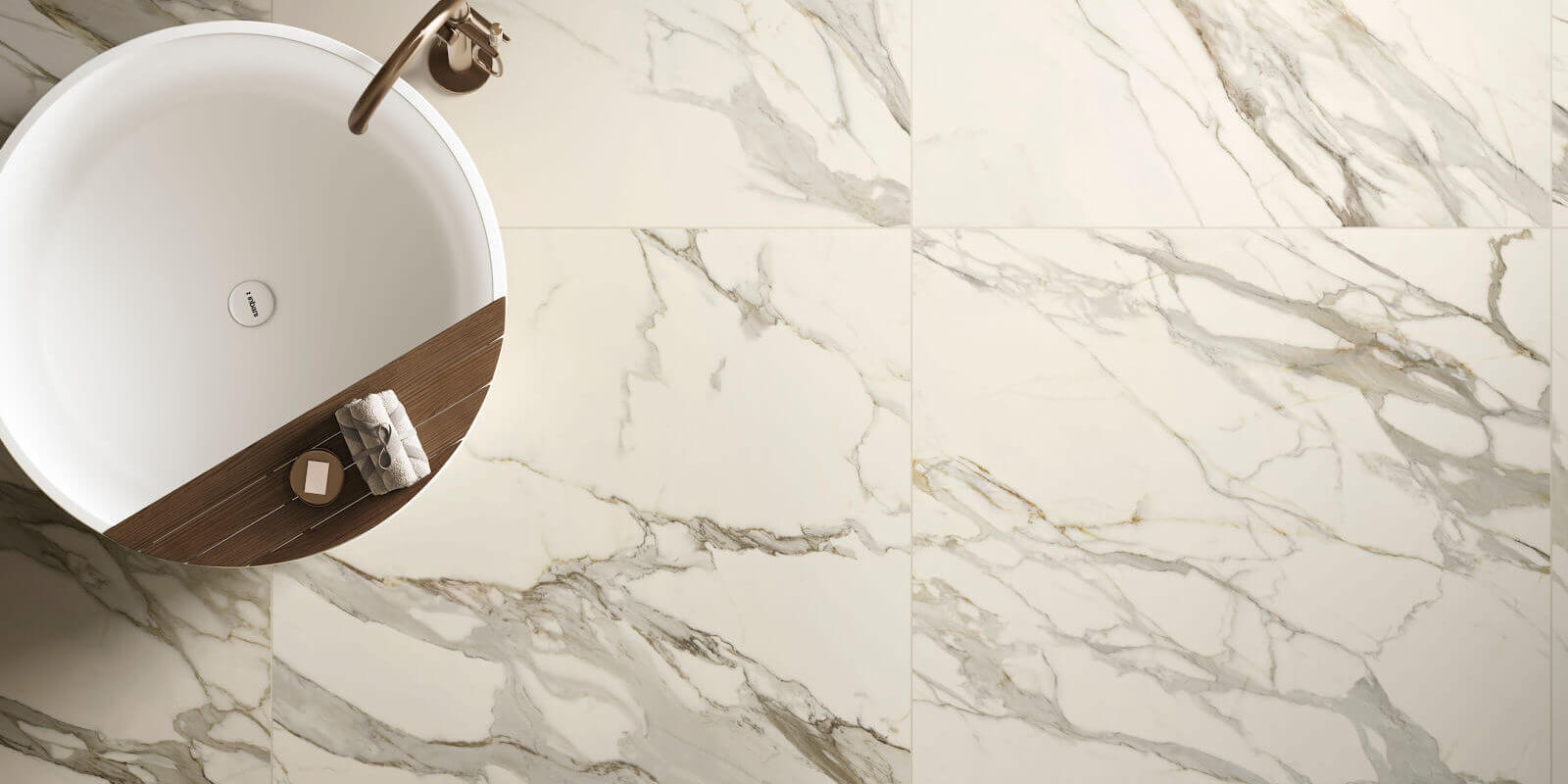
Porcelain tile surfaces offer aesthetic and functional advantages over many non-ceramic surface options, including water, stain, and scratch resistance. Pair these benefits with easy maintenance, and you have an ideal surface choice from floor to ceiling, inside and out, with options appropriate for different levels of use (residential to heavy industrial).
Spend less time cleaning and more time admiring your beautiful porcelain tile surfaces with easy cleaning tips shared by GGCL.
A Super-Quick Guide to Cleaning Porcelain Tile Surfaces
Need a quick answer? We’ll get into the whys and wherefores below, but here are some quick, need-to-know tips to clean up your current mess.
What to DO When Cleaning
- For regular cleaning, just sweep away debris, wipe with clean water, and thoroughly dry.
- For deep cleaning, use a pH-neutral or mildly alkaline detergent.
- Use a nylon or plastic scrubber, if needed.
What NOT to Do When Cleaning
- Don’t use acidic cleaners, including vinegar.
- Don’t use oil- or wax-based cleaners as they leave a residue that may attract dirt.
- Don’t use steel wool or other abrasive scrubbers.
How to Clean Porcelain Tile
Porcelain tile surfaces make maintenance easy for you with many easy-care benefits.
You know best how often to clean, whether that means once a week, twice a week, or even every day — after all, it depends on the level of foot traffic in your home, how much you use a space, and if you have any mess-making humans or pets in the house. Where and how your surface is used — such as flooring, countertop, or shower tile — also determines when you need to clean.
For regular light cleaning of porcelain surfaces, all you need to do is:
- Sweep: Your first step is to sweep away dust, crumbs, and other debris that have accumulated since your last cleaning. Take this time to sweep or clean any throw rugs. If you’re cleaning a porcelain countertop rather than flooring, simply wipe off crumbs.
- Wipe with water: Next, wipe with clean water. That’s right: water alone is enough to clean lightly soiled porcelain tile surfaces. No harsh chemicals are necessary! If you choose to use a mop for your flooring, be sure you have swept up debris beforehand and use a flat mop rather than a sponge mop to keep from pushing dirty water into the grout lines.
- Dry: Dry thoroughly after wiping with water, either by air-drying or using a microfiber cloth (a dry flat mop is great as well).
How to Deep Clean Porcelain Tile
Sweeping and wiping with water may not be enough to clean up every mess that life throws your way. Likewise, periodic deep cleaning is essential to any home cleaning routine.
Deep cleaning means swapping out water for a cleaning solution. Think you already know how to clean and disinfect? The best cleaners for porcelain and ceramic tile are those that are formulated especially for tile and grout. Makes sense, right?
When you can’t find a tile-specific cleaning product, look for a pH-neutral cleaner or slightly alkaline cleaner, such as Spic and Span or Mr. Clean. Don’t use oil- or wax-based cleaners because they leave a residue on your surfaces that may attract dirt more readily. For more information on different types of cleaners and what’s recommended, scroll down.
A little elbow grease may also be all that’s necessary for tough-to-remove spills and messes. Plastic and nylon scrubbers are great for these instances.
Rinse thoroughly with clean, clear water after cleaning to remove any residue from the cleaner. Otherwise, residue will attract dirt and may leave your surface with a dull appearance. Using clean water to rinse the surface is very important, so refill your bucket with new water rather than reusing dirty rinse water.
Dry thoroughly — just give your surfaces a bit of time to air dry or wipe with a clean, dry mop or cloth.
How to Disinfect Porcelain Tile
We may now be more concerned with disinfecting our surfaces than ever before. Porcelain tile surfaces don’t require the use of harsh cleaning chemicals, which is an advantage for those of us wanting to keep these substances out of our kitchens. However, note that the occasional use of harsher disinfectants will not dull or damage porcelain or ceramic tile, such as may be the case with many other nonceramic surface materials.
Consult the Environmental Protection Agency’s (EPA’s) list of registered disinfectants when deciding on which to use, and keep in mind that different disinfectants may be more appropriate for fighting specific bacteria or viruses. Be sure to thoroughly rinse away the suds after cleaning to prevent residue from drying on your surfaces.
Note: Always follow the label’s instructions for safe use when cleaning with disinfectants and chemicals, such as ensuring proper ventilation and wearing gloves.
